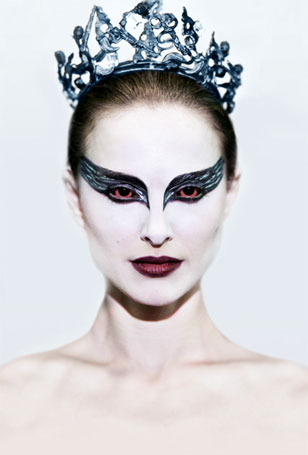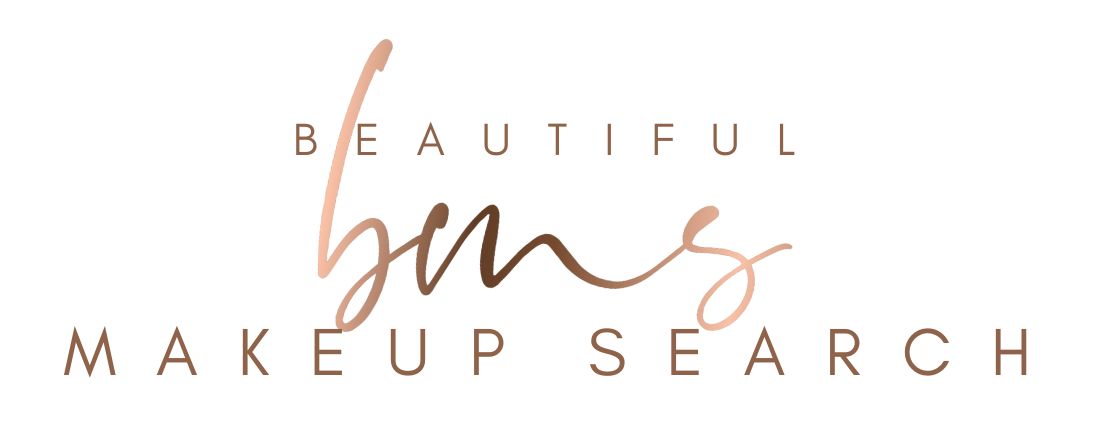A Behind the Scenes Look at the Makeup for The Black Swan Movie.
/I am not going to pretend that the movie The Black Swan (or the image below) does not terrify me. As I am pretty much afraid of my own shadow, this is one movie that I will not be seeing - though it looks spectacular. Looks, as in the scenery, costume and of course, the makeup.

It is no surprise that much of the creativity came from the M·A·C Cosmetics team and the M·A·C makeup used in the film. In particular, what went in to the finale Black Swan look. To get a full run-down and an interesting look at what went into the look as well as working on a movie, read on for a little Q & A with department head Margie Durand and makeup designer Judy Chin.
Q: How does a makeup artist prepare to work on a film? Do you receive guidance from the director or collaborate with the costume designer/art director/key hair stylist on the makeup look?
Margie: When I begin working on a film I speak to the director and all of the creative team if possible. The directors inspiration and vision really drives the process and I try to deliver that vision in makeup.
Judy: As I read the script, I try to envision the characters, taking into account their background (age, personal history, affluence, profession). As I see the plot develop in the story, I make note of how these events might affect their appearance. When I’m designing the looks for a film, it’s very important to consider the director’s visual style and tastes. Occasionally, I get to collaborate with the costume or production designers. I always try to find out how the actors will be dressed, as that can have a significant influence on the makeup look. While our designs are often created independently at first, I find that the hair stylist and I work very closely to be sure that our looks fit together and bring the characters to life.
Q: How long does it typically take for you to prepare to start working on a movie like Black Swan?
Judy: I spend a lot of time drawing and doing practical makeup tests. Depending on actor availability and camera tests, it could take three to four weeks of preparation.
Q: How does a makeup design contribute to building a movie character?
Judy: What I’ve always loved about makeup design is its contribution to the actor’s performance. Makeup helps to create the character visually. I feel that I’ve done my job well when an actor can walk onto the set feeling like the embodiment of the character that he or he is portraying.
Q: Can you give a step by step explanation as to how the Black Swan look was created as well as the products that were used?
Margie: We applied a pale ivory foundation with a white cream highlight on the forehead and cheekbones. To create the swan eyes, we used M·A·C Chromaline in Black Black. Using M·A·C Pigment in Silver combined with Mixing Medium, we applied feathery brushstrokes over the Black Swan’s eyes. The lips were lined with M·A·C Lip Pencil in Vino and topped with M·A·C lipstick in Dubonnet. We then lined the under eye with a thin line using M·A·C Chromaline in Red.
Q: Does the makeup have any relation to the makeup in the traditional version of the Swan Lake ballet?
Judy: Not really. The ensemble dancers wear what might be considered a traditional theatrical eye makeup, but our rendition is more dramatic. It’s practically an opera makeup. Besides that, the only other relation might be that we did portray the Black Swan as a sinister dark foil to the more angelic and innocent Swan Queen.
Q: The ballerinas’ performance makeup in the movie is especially dramatic and visually arresting. What inspired the dark romantic makeup look?
Judy: The look was inspired by the story, and by the director, Darren Aronofsky I felt that he was looking for something dramatic and visually striking, so all of the intensity was focused in the eyes. Margie Durand realized that there were elements of our beautiful set design that should play a role in our makeup. Thus, the delicate silver branches that played across the swan’s faces came to be. The ensemble swans and the Swan Queen are delicate and romantic with a soft pink lip color, whereas the Black Swan is dark, sharp, and, angular.
Q: A ballerina has an incredibly active job, and in Black Swan, the characters wear both body and face makeup. What products did you use in the film that you were certain would hold up to the lights, movement and perspiration?
Judy: We used pancake makeup with a spray sealant to ensure that it wouldn’t rub off on the costumes. We also used M·A·C Paint Pots, M·A·C Powerpoint Eye Pencils, and M·A·C Pigments. In addition, we applied some alcohol based pigments that are virtually water proof and rub proof.
Q: What challenges did you face when designing and applying the makeup?
Margie: It was a challenge to makeup the Black Swan as the White Swan and then switch back to Black Swan during the long filming days. Both makeups had to be retouched because of the strenuous dancing for the close-up shots.
Judy: It would have been a huge problem if any of the makeup rubbed off onto the costumes, so we had to do many tests before we came up with the right combination of products – especially for the hands. The only other challenge was conveying to our team the application techniques, as it really was an operatic style of makeup. The shaping of the eyes and painting the whole eye in cake makeup is unusual for modern makeup artists. Most people are a bit intimidated by pancake makeup and they dismiss it as “old fashioned,” but it can be really beautiful if done properly. In the end, the whole team worked really hard and did a stunning job.
Q: Did you use any products in a non-traditional way?
Judy: We mixed the M·A·C Pigment in Silver with a sealant to create a waterproof liquid. We then used this metallic liquid to paint our delicate silver branches across the little swan faces.
Q: Black Swan makeup tutorials have popped up all over the Internet. Why do you think makeup fans are fascinated with this look, even before the film’s release?
Judy: What’s not to be fascinated with? The look is intense, alluring, and sexy with a bit of danger mixed in. Frankly, I’m flattered and pleased that there has been this much interest in the Black Swan makeup.
Q: How can the everyday woman translate the dramatic Black Swan makeup into an evening look?
Judy: There are a lot of aspects to this makeup that are standard elements for a classic beauty makeup. The highlights and contours along the cheekbones, nose, jaw line, and the pout of the mouth can all be adapted to a contemporary makeup. I also think one could incorporate the dramatic eyeliner – the angles and the intensity - into a very seductive, catlike smoky eye.
Margie: Think 1920’s vamp makeup: create the smoky Black Swan eyes with slender, silver eye liner applied under black wingtip liner and add thin wisps of silver liner over the eyelid, too. Rim the waterline with black liner and top it off with full, feathery false eyelashes. Apply a very matte foundation with contoured cheekbones and a hint of shimmery blush on apple of cheeks. Lips can be matte or glossy in dark eggplant, wine and even black colours!
Q: What other films have you worked on?
Margie: Sex and The City: The Movie, Cadillac Records, Across The Universe, Requiem for A Dream, I Shot Andy Warhol
Judy: The Unbelievable Truth, Ghost Dog, Requiem for a Dream, Frida, House of Sand and Fog, Broken Flowers, The Fountain, Blood Diamond, Across the Universe, Synecdoche New York, All Good Things, The Wrestler, Sex and The City: The Movie, Sex and The City 2, Dream House and The Tempest.
Q: Have you ever worked on a fashion show? If so, what are the differences between the creation of a movie makeup and the look for a fashion show? Is the creative process similar or different?
Margie: The creation process is similar; the differences are huge. In film, the makeup needs to be recreated more than once, whereas in fashion on a runway, it is created for one day or one show. In film, there is continuity of passage of time from minutes to days to years, and the character’s look has to adjust for this, sometimes all on the same shooting day. In film, the makeup needs to enhance the actors’ performances and become part of their characters, contributing to beauty, injury, aging, etc.
Q: How did you get into the film industry and how many years have you been working with makeup on film sets?
Margie: I began working on music videos in the late 1980’s and I have been a makeup artist for 22 years.
Judy: I’ve been working in the film industry for 22 years, as well. I got started by working on any project I could get my hands on that required a makeup artist. I worked on low budget films, no budget films and music videos. Some of those projects were extremely difficult because they were so small that they often never even considered what a difference a good makeup department could have made. That said, I always managed to enjoy my work, be innovative, and enjoy the creative process with the actors. I was lucky to meet some wonderful crews early on, and they inspired me to persevere. It totally paid off.
Q: What is the one M·A·C product that you cannot go on set without? Why?
Margie: I use so many M·A·C products on every job, but the Blot Powders are a must for whatever seems to be going on with my makeup at any given moment!
Judy: That’s a really difficult question, but I guess I would have to say a Powerpoint Eye Pencil. I think I could make up anyone with just one Powerpoint Eye Pencil. Or at lease enhance their features.
Have you seen the film, or do you plan on seeing it? I would love to hear your thoughts. For now, I think I'll stick with my new favorite Pearlglide Eyeliner from the Tartan Tale Collection, coincidentally called Black Swan.











